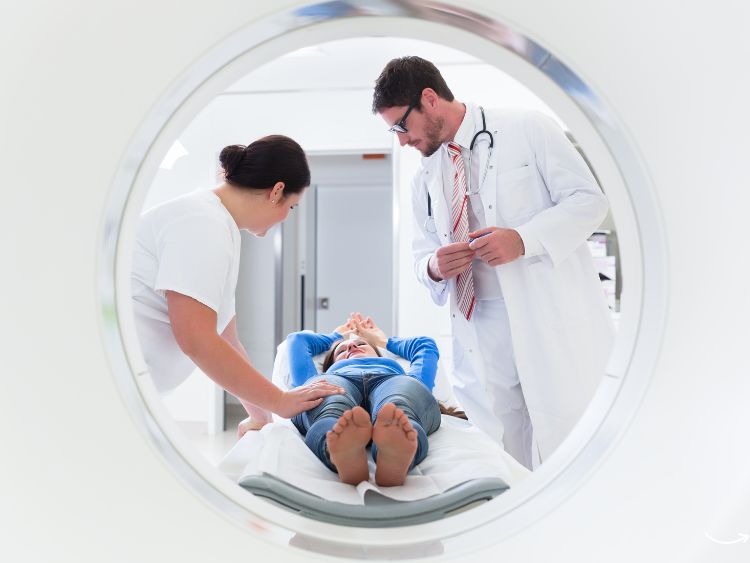Have you ever wondered what goes on behind the closed doors of a radiology department? Professional radiology is not just about taking X-rays; it’s a dynamic field that combines cutting-edge technology with skilled expertise to diagnose and treat conditions with an unprecedented level of precision. In this article, we’ll dive deep into the fascinating world of professional radiology, exploring its various techniques, applications, and the profound impact it has on patient care.
What is Professional Radiology?
Professional radiology is the science of using various forms of radiation to view internal structures of the body to diagnose and sometimes treat diseases. A highly trained medical professional, known as a radiologist, performs these tasks. Radiologists utilize an array of imaging techniques including X-rays, CT scans, MRI scans, ultrasound, and PET scans to create detailed images of the internal organs and tissues.
Key Techniques in Radiology
- X-ray Imaging: The most common form of imaging that provides valuable information about the bones and other dense structures.
- CT Scans (Computed Tomography): This technique combines multiple X-ray images taken from different angles to produce cross-sectional views of the body.
- MRI Scans (Magnetic Resonance Imaging): MRI uses strong magnetic fields and radio waves to generate detailed images of organs and tissues.
- Ultrasound: Often used in obstetrics, but also for examining soft tissues throughout the body, ultrasound uses sound waves to produce images.
- PET Scans (Positron Emission Tomography): This imaging test helps to reveal how your tissues and organs are functioning, often used to detect cancer.
The Role of Radiologists
Radiologists are the wizards of imaging, interpreting the images and providing critical information that guides the treatment process. Here’s a rundown on their crucial roles:
- Diagnostic Analysis: They interpret the images to diagnose diseases and conditions.
- Interventional Procedures: Many radiologists perform surgical procedures using imaging technology to guide them.
- Patient Consultations: They discuss results and treatment options directly with patients and other doctors.
The Impact of Radiology on Modern Medicine
Radiology has revolutionized medicine by providing a non-invasive method to see inside the body. Here are a few ways it makes a huge impact:
- Early Detection and Diagnosis: Many diseases can be detected early with the help of radiological techniques, which significantly improves the prognosis.
- Treatment Monitoring: Radiology is not just for diagnosis; it’s also used to monitor how well a treatment is working.
- Interventional Radiology: Less invasive than traditional surgery, interventional radiology can treat conditions by inserting small tools guided by imaging techniques.
Advancements in Professional Radiology
The field of radiology is always advancing, with new technologies enhancing the precision and safety of radiological procedures. Here are some noteworthy advancements:
- AI and Machine Learning: These technologies are used to enhance image analysis, improving the accuracy and speed of diagnoses.
- Digital Imaging: Replaces traditional film, making it easier to store and share images digitally.
- 3D Imaging: Offers detailed views of the anatomy, improving diagnostics and treatment planning.
Challenges Facing Radiologists
Despite the advances, radiologists face their fair share of challenges:
- High Demand and Workload: The volume of imaging studies continues to grow, putting pressure on radiologists.
- Keeping Up with Technology: Rapid technological advancements require ongoing education and adaptation.
- Risk of Diagnostic Errors: Misinterpretations can lead to incorrect treatment plans.
FAQs about Professional Radiology
What’s the difference between a radiologist and a radiologic technologist?
- A radiologist is a medical doctor who interprets medical images and may perform interventional procedures, whereas a radiologic technologist is trained to operate the imaging technology.
How safe are radiological procedures?
- Modern radiology is generally very safe. However, exposure to radiation is carefully managed to keep it to a minimum and used only when necessary.
Can radiology be used for treatments?
- Yes, interventional radiology allows for treatments such as angioplasty, stent placements, and more, which are often less invasive than surgery.
Conclusion
Professional radiology is a cornerstone of modern healthcare, offering a window into the human body that is invaluable for diagnostic and therapeutic purposes. Its continuous evolution promises even greater advancements in the quality of patient care. Radiologists, with their expertise, play a pivotal role in ensuring that the potential of radiological technology is fully realized, providing critical support in the diagnosis and treatment of myriad conditions. As technology progresses, so too does the capability of radiology to provide safer, faster, and more effective healthcare solutions.



